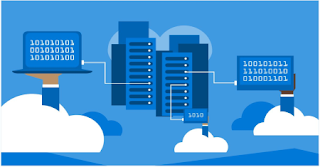Lo1 - Information System
1. Explain information system
an integrated set of components for collecting, storing, and processing data and for providing information, knowledge, and digital products. Business firms and other organizations rely on information systems to carry out and manage their operations, interact with their customers and suppliers, and compete in the marketplace. Information systems are used to run interorganizational supply chains and electronic markets.
2. Explain the types of information and give example:
an integrated set of components for collecting, storing, and processing data and for providing information, knowledge, and digital products. Business firms and other organizations rely on information systems to carry out and manage their operations, interact with their customers and suppliers, and compete in the marketplace. Information systems are used to run interorganizational supply chains and electronic markets.
2. Explain the types of information and give example:
- qualitative
Qualitative information is non numeric information based on the quality of an item or object. For example if you were testing water then you might say that the taste is either nice or not so nice. This would be very much based on opinion. When testing the quality of something and forming an opinion on it this can be known as qualitative information. Qualitative information might be collected by a restaurant based on what their customer thought of the taste of the food. Customers may be asked to choose if the food was bad, average, good or excellent. Since different customers have different opinions then the information collected is not fact based and is a qualitative opinion on the quality of something.
- quantitative
Quantitative information is information than can be directly measured and can be seen as factual information rather than opinion. For example, when testing water the fluoride content of the water might be measured in milligrams. The information collected is number based and provides hard facts on the quality of the water. It is harder to argue against quantitative information. An example of a restaurant collecting quantitative information would be to ask customers how much they would pay for a meal. This could be seen as a mix of quantitative and qualitative information but the end result is a numeric value based on the customers’ opinion so it is quantitative information.
- primary
Primary information is information that you collect yourself. For example carrying out a survey or using sales figures from your own cash registers. Since you are 100% sure where the information came from as you are the primary source then primary information can be seen as reliable and accurate if it has been collected together in the correct way. Obtaining primary information is more expensive as you need to collect, store and analyse the information yourself.
- secondary
Secondary information is information that is collected from a secondary source outside of your own organisation. Using secondary information is riskier than using primary information as you are relying on someone else to collect and supply the information and you need to ensure it comes from a reliable source. A good source of secondary information would be from a trusted document such as an encyclopaedia. If you were using a web forum to select information from then there is a risk that the information is not reliable and accurate as information that you collected yourself. Hopefully after reading you have a better understanding of the types of information and how they can be used by a business.


Comments
Post a Comment